Beating the Najdorf, in style
Few players are as coupled with a particular setup as Maxime Vachier-Lagrave is with the Sicilian Najdorf. The Frenchman, who holds a bachelor’s degree in mathematics, enjoys entering positions in which extremely precise calculations are needed to navigate the complications. While this strategy works wonders at times, it can also backfire against a deeply prepared opponent.
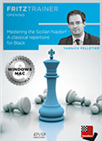 This Najdorf-DVD is suited for the beginner as well as experienced club players. Pelletier presents a classical repertoire that's easy to learn and covers all you need to know about the Najdorf.
This Najdorf-DVD is suited for the beginner as well as experienced club players. Pelletier presents a classical repertoire that's easy to learn and covers all you need to know about the Najdorf.On Thursday, Nils Grandelius played 1.e4, knowing all too well that his opponent was very likely to play his pet opening. Perfectly ready for the challenge, the Swedish grandmaster entered a line in which, according to current theory, Black should be able to force a draw by repetition. MVL did not go for that particular line and agreed to play a pawn down in a messy position.
Grandelius, who knows how tough it can be to turn that advantage into a win against the Frenchman, spent almost an hour on moves 20 and 21. The lengthy reflections could have easily backfired as he got in time trouble, but in fact they turned out to be good investments, as the 27-year-old ended up getting a memorable win. Grandelius confessed:
I’m not super happy with my conversion, but I think it was sort of fine.
With the remaining games ending in draws, Grandelius reclaimed the sole lead he had let go of in round 3, when he lost to Pentala Harikrishna. For the Swedish star, a tough challenge lies ahead, as he will face defending champion Fabiano Caruana in the sixth round.
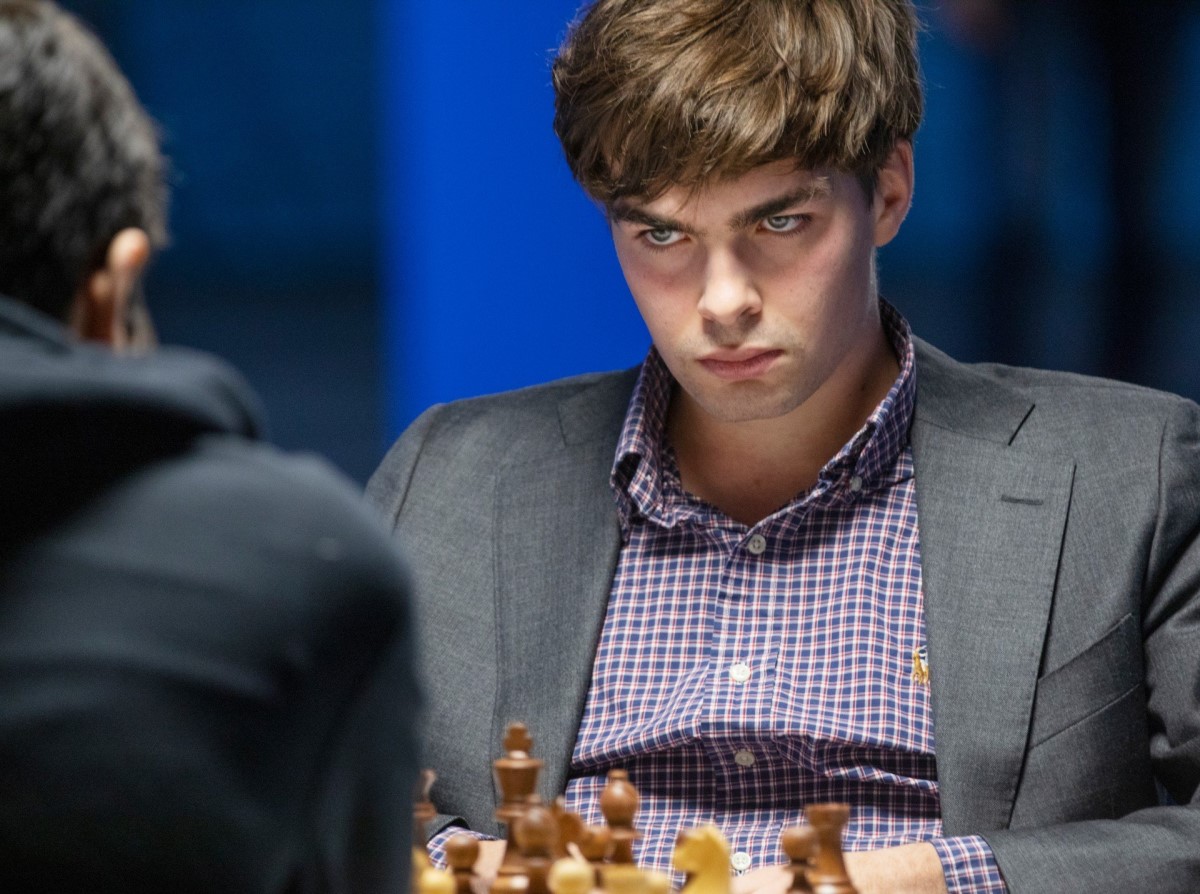
Jorden van Foreest has drawn all five of his games so far | Photo: Jurriaan Hoefsmit
A poisoned pawn, a potential repetition
Maxime Vachier-Lagrave grabbed the infamous poisoned pawn on b2 in the Najdorf, and 15 moves of theory were blitzed out by both players. Although they began to spend some minutes in each move, the position had been seen in a correspondence game until move 19:
The correspondence game continued 19...Nh5, when the commentators were expecting a repetition with 20.Rf5 Nf6 21.Rf4, etcetera. In the post-game interview, however, Grandelius hinted at the fact that he would not have repeated the position as he had something prepared against 19...Nh5.
Perhaps fearing that his opponent might have something ready in the main variation, Vachier-Lagrave responded instead with 19...Qe6. It was in the following two moves that Grandelius spent over 50 minutes — 20.Rxb7 0-0 21.h3:
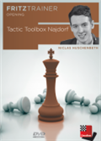 The aim of this DVD is to demonstrate the typical tactical themes of the Sicilian Najdorf and to improve your understanding of them, as well as to practice them with the interactive examples.
The aim of this DVD is to demonstrate the typical tactical themes of the Sicilian Najdorf and to improve your understanding of them, as well as to practice them with the interactive examples.
Of course, those do not seem to be very committal manoeuvres, but in such sharp positions every detail must be taken into account. Grandelius was now a pawn up and needed to convert his advantage into a win against an extremely sharp player. The Swedish grandmaster was up to the task, as he increased his advantage and finished the game in style:
31.Qh4 ignoring the attack against his rook, as 31...gxf4 does not work due to 32.exf5 and the knight will give a deadly check on e7 in the next move. MVL tried to hold on to dear life with 31...Bf8, but then came 32.Rf6:
Again Black cannot capture the rook with 32...Nxf6 — 33.Nxf6+ Kf7 34.Qxh7+ Bg7 35.Ng4 Rg8 36.Nh6+ Kf8 37.Bxg7+ Rxg7 38.Qh8+ Rg8 39.Qxg8+ Qxg8 40.Nxg8 Kxg8 and White is two pawns to the good in the pawn endgame.
The Frenchman went for 32...Qe8, and saw his opponent insisting on the exchange sacrifice with 33.Rxf8+. After 33...Qxf8 34.Ne7+ Kf7 35.Nxc8 Vachier-Lagrave resigned, as he is about to lose another pawn and his king is totally loose.
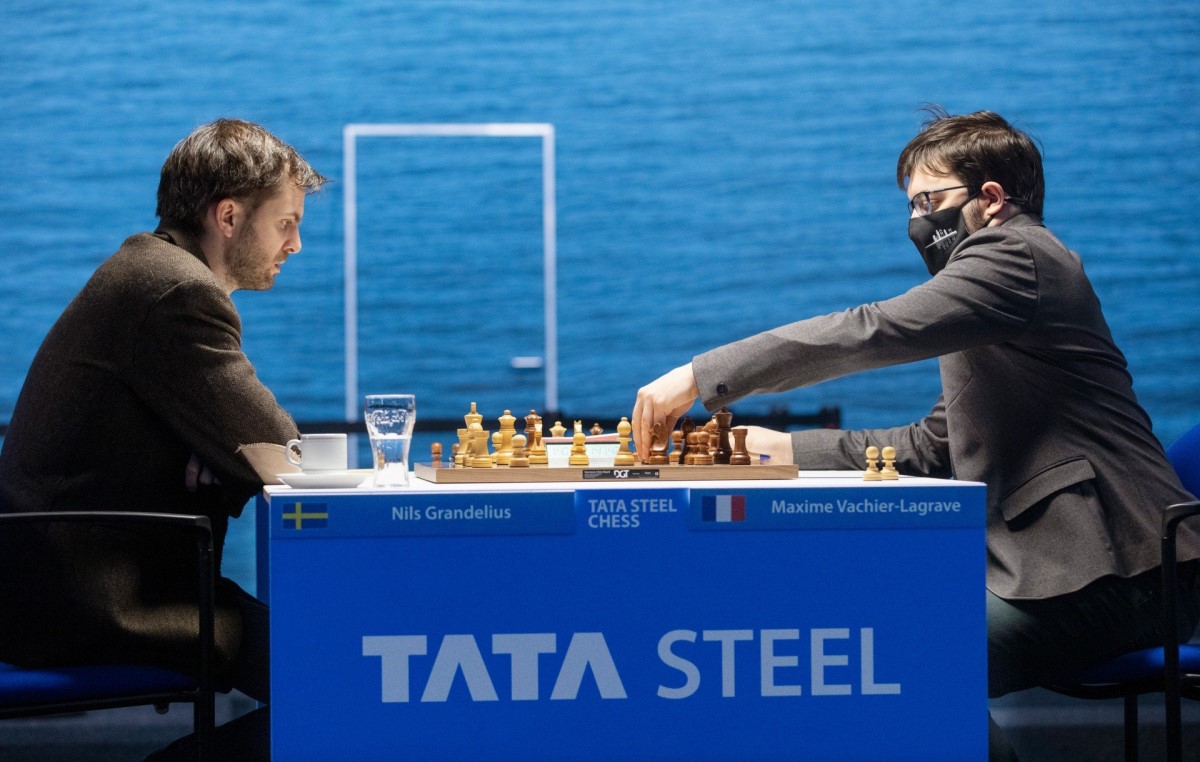
Maxime Vachier-Lagrave never shies away from complex struggles | Photo: Jurriaan Hoefsmit
Anton and Tari miss wins
We should add that both missed chances in the same (dramatic) game. Playing white, Anton had obtained a well-earned advantage out of a Berlin Defence. The Spaniard was not precise enough in the endgame though:
 In over 4 hours in front of the camera, Karsten Müller presents to you sensations from the world of endgames - partly reaching far beyond standard techniques and rules of thumb - and rounds off with some cases of with own examples.
In over 4 hours in front of the camera, Karsten Müller presents to you sensations from the world of endgames - partly reaching far beyond standard techniques and rules of thumb - and rounds off with some cases of with own examples.
The natural-looking 39.Rb5 was a mistake, as White needed to play 39.Kf2 first. The continuation of the game demonstrates the importance of bringing the king to the queenside in order to deal with the potential passer on that flank of the board.
After Anton’s rook manoeuvre the game continued 39...b3 40.Rxc5 Rxe5 41.Rxe5 a3 42.bxa3 b2 43.Rb5 and White had no other option than to give up his rook for the pawn:
Anton still had three connected passed pawns on the kingside, which was enough to hold the balance. In a dramatic turn of events, however, he blundered again and entered a lost position — only to see Tari blunder in return a couple of moves later! Endgame specialist Karsten Müller took a closer look at the fascinating position.
Analysis by GM Karsten Müller
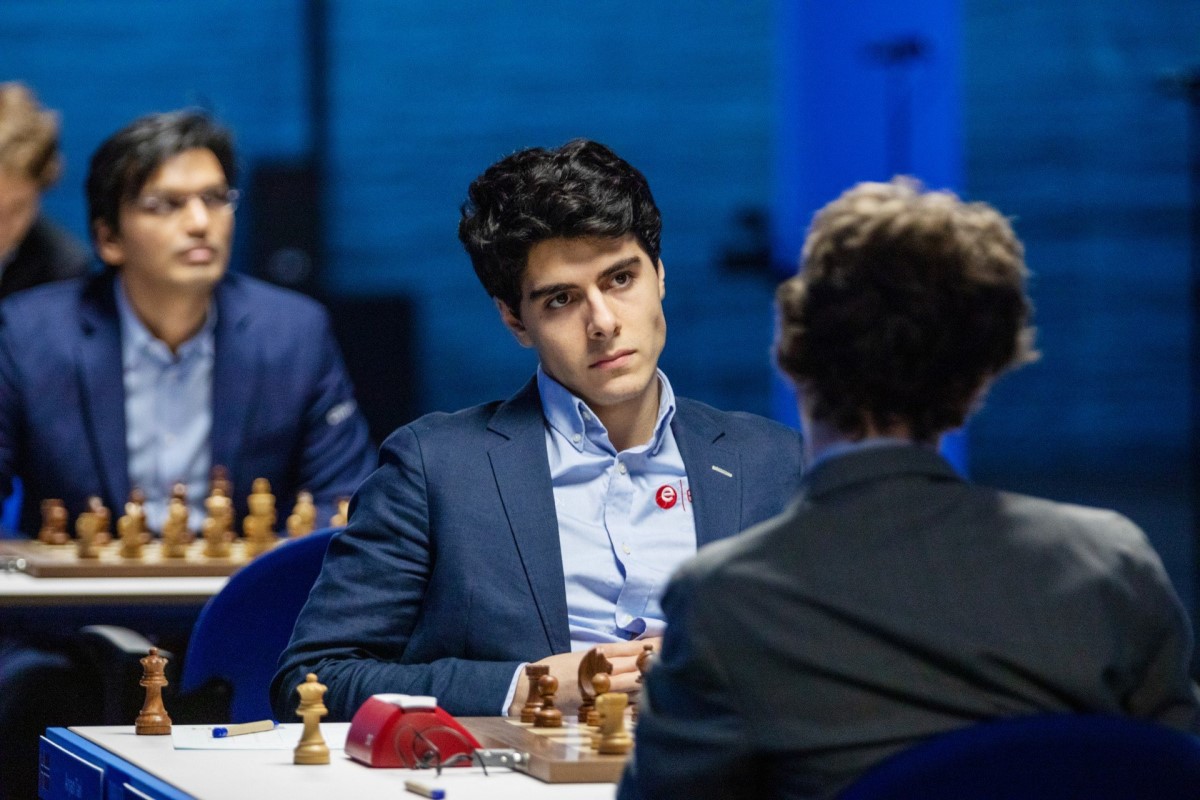
It was a rollercoaster game for Aryan Tari and David Anton | Photo: Jurriaan Hoefsmit
Top seeds cannot beat lower-rated opposition
Both Magnus Carlsen and Fabiano Caruana had the white pieces against much lower-rated players on Thursday. Alexander Donchenko and Andrey Esipenko proved, however, that they have what it takes to hold a draw with black against the top two players in the world. In both cases, the underdogs calculated extremely sharp variations to stay out of trouble against their famed rivals.
Donchenko spent almost half an hour on his 47th move:
 Scarcely any world champion has managed to captivate chess lovers to the extent Carlsen has. The enormously talented Norwegian hasn't been systematically trained within the structures of a major chess-playing nation such as Russia, the Ukraine or China.
Scarcely any world champion has managed to captivate chess lovers to the extent Carlsen has. The enormously talented Norwegian hasn't been systematically trained within the structures of a major chess-playing nation such as Russia, the Ukraine or China.
The German later explained:
The alternative was 47...e4, and basically you have to figure out if the position is a draw or not at that point. There are some forced lines, and sometimes I end up down a piece, but I think those are actually the harmless ones, and the one I chose was actually quite dangerous. It looked like if something goes wrong here it goes wrong forever.
Chess is tough!
Select an entry from the list to switch between games
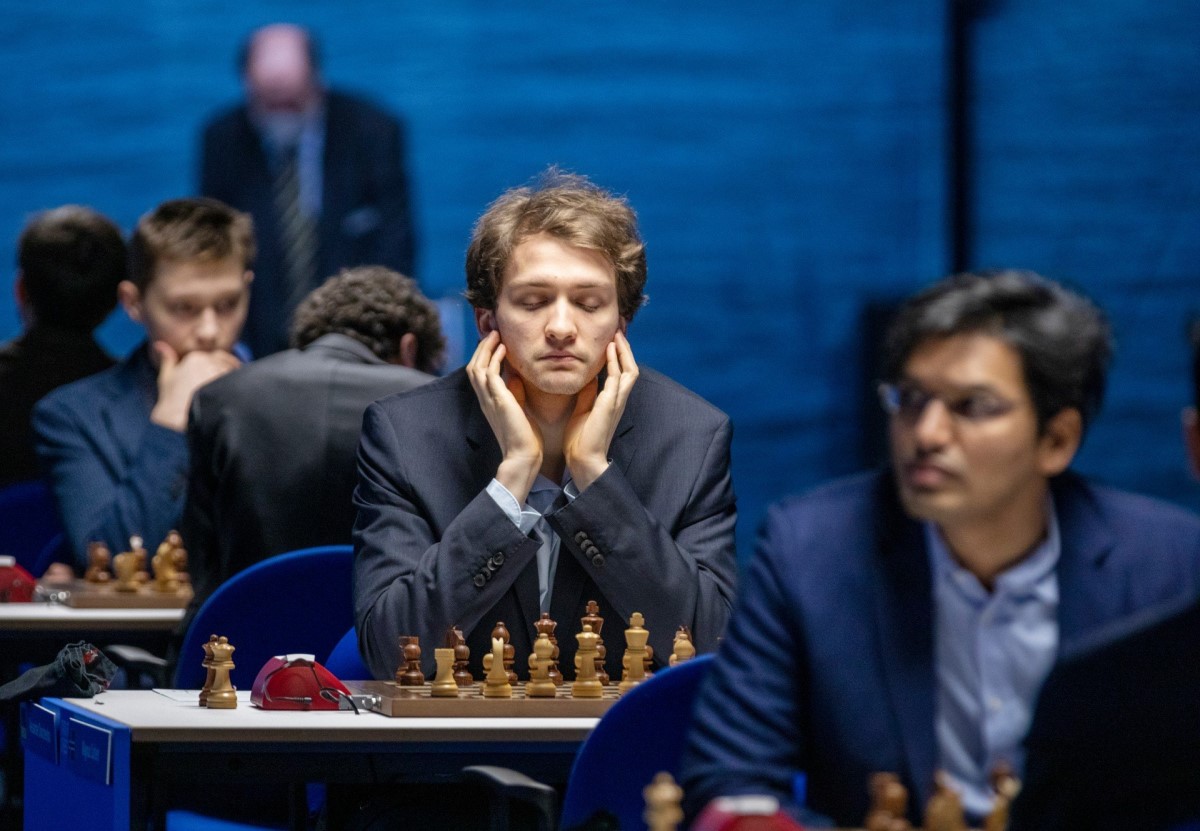
Germany’s number 2 Alexander Donchenko | Photo: Jurriaan Hoefsmit
Round 5 results
Standings after Round 5
All games
Links



























